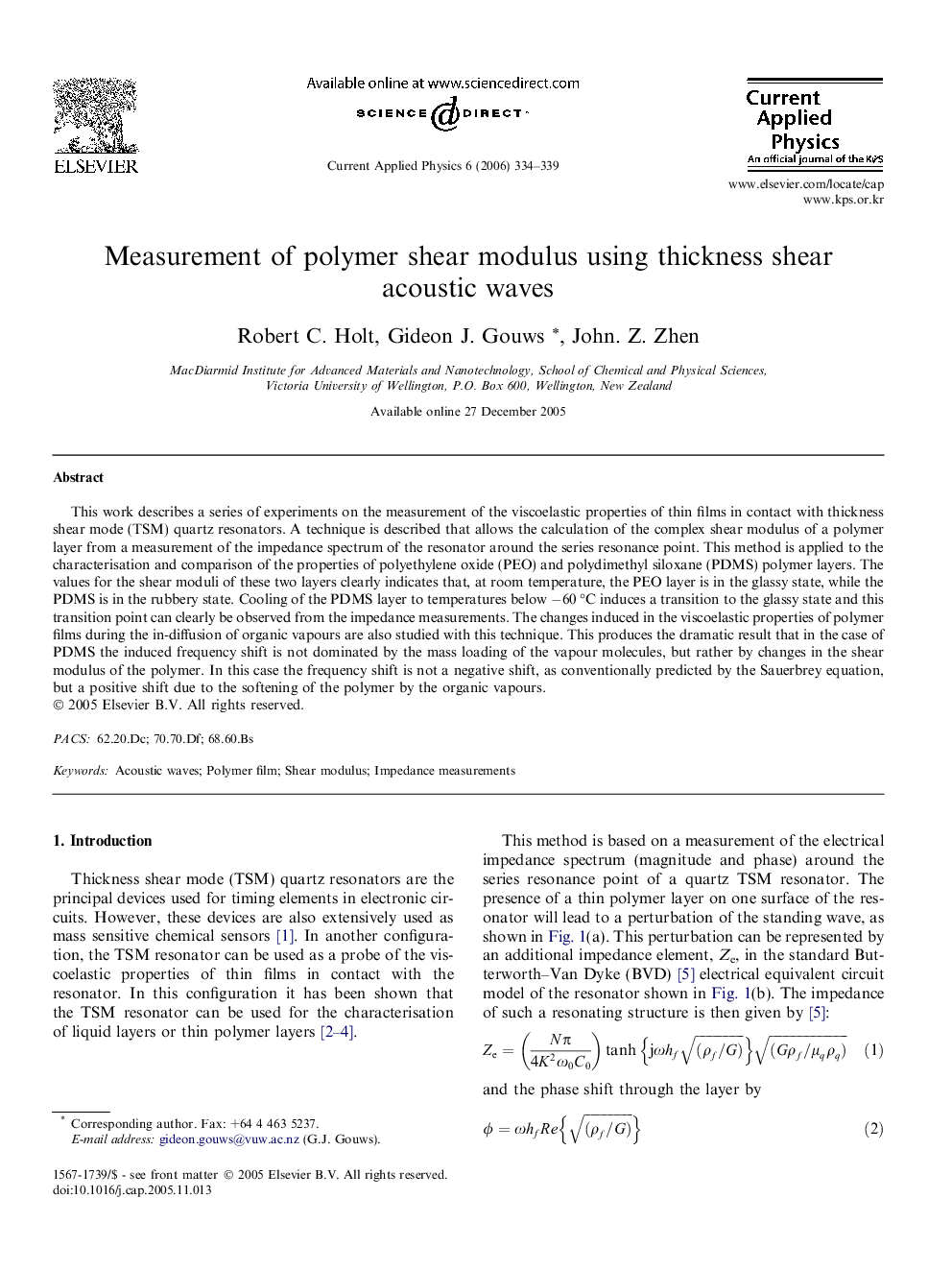| Article ID | Journal | Published Year | Pages | File Type |
|---|---|---|---|---|
| 1787958 | Current Applied Physics | 2006 | 6 Pages |
This work describes a series of experiments on the measurement of the viscoelastic properties of thin films in contact with thickness shear mode (TSM) quartz resonators. A technique is described that allows the calculation of the complex shear modulus of a polymer layer from a measurement of the impedance spectrum of the resonator around the series resonance point. This method is applied to the characterisation and comparison of the properties of polyethylene oxide (PEO) and polydimethyl siloxane (PDMS) polymer layers. The values for the shear moduli of these two layers clearly indicates that, at room temperature, the PEO layer is in the glassy state, while the PDMS is in the rubbery state. Cooling of the PDMS layer to temperatures below −60 °C induces a transition to the glassy state and this transition point can clearly be observed from the impedance measurements. The changes induced in the viscoelastic properties of polymer films during the in-diffusion of organic vapours are also studied with this technique. This produces the dramatic result that in the case of PDMS the induced frequency shift is not dominated by the mass loading of the vapour molecules, but rather by changes in the shear modulus of the polymer. In this case the frequency shift is not a negative shift, as conventionally predicted by the Sauerbrey equation, but a positive shift due to the softening of the polymer by the organic vapours.
